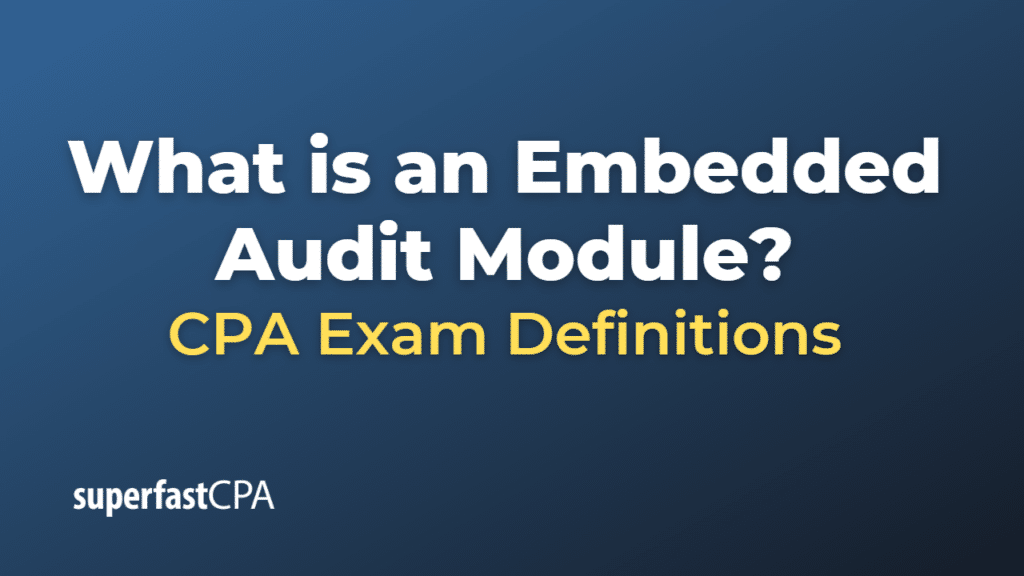Embedded Audit Module
An embedded audit module, in the context of Information Systems Auditing, is a set of programmed procedures or routines incorporated into a system to collect audit evidence. This is done automatically during the system’s normal operation.
Embedded audit modules are designed to track specific transactions, flagging anomalies or transactions that meet pre-defined criteria for auditor review. The goal is to provide ongoing monitoring and auditing of transactions without disrupting the system’s regular operations.
Here’s an example of how an embedded audit module might work: Let’s say a company wants to ensure that all sales transactions over $10,000 are authorized by a manager. An embedded audit module could be programmed into the company’s sales system to flag all such transactions. Whenever a sales transaction over $10,000 occurs, the module records the transaction details and whether it was appropriately authorized. The auditors can then periodically review this information to identify any transactions that did not receive proper authorization.
By providing real-time or near real-time monitoring of transactions, embedded audit modules can help detect errors, fraud, or noncompliance more quickly than traditional audit methods. However, they need to be carefully managed and secured, as they have access to sensitive system and transaction data.
Example of an Embedded Audit Module
Here’s an example of how an embedded audit module might be used in a financial system.
Suppose there’s a company called “Fast Finance Inc.” that processes thousands of financial transactions every day. Given the volume, it’s impossible for internal auditors to manually check each transaction for inconsistencies or errors.
To address this, Fast Finance Inc. incorporates an embedded audit module in its transaction processing system. This module is programmed to look for certain indicators of fraud or error, such as:
- Transactions that exceed a certain dollar amount, say $50,000, because these could represent a higher risk if they’re incorrect or fraudulent.
- Transactions that are processed outside of normal business hours, which could be a sign of unauthorized activity.
- Transactions processed by certain high-risk or high-privilege user accounts, to ensure these are being used appropriately.
The embedded audit module tracks these transactions in real time as the system processes them. If it detects any that meet the criteria, it flags them and records relevant details in a special audit log.
The auditors periodically review the audit log to check for any flagged transactions. For each one, they would verify whether it was correct and authorized. If any issues are found, they can investigate further to understand what went wrong and how to prevent it in the future.
Through this process, Fast Finance Inc. can effectively monitor its high-volume transaction processing, detect potential issues more quickly, and provide assurance that its financial controls are working properly. The embedded audit module aids in efficient and effective auditing without disrupting the normal operations.













